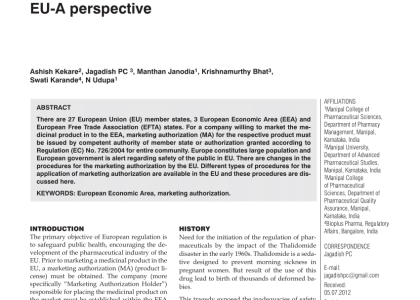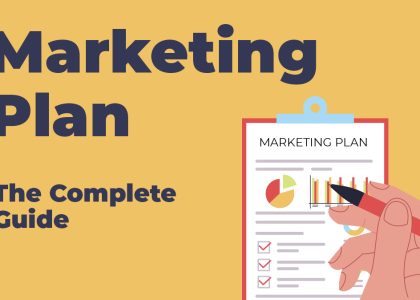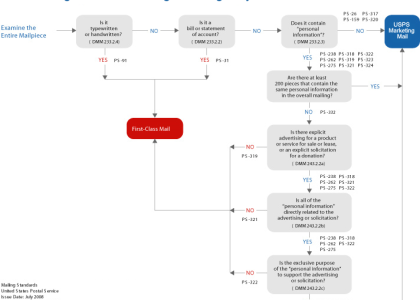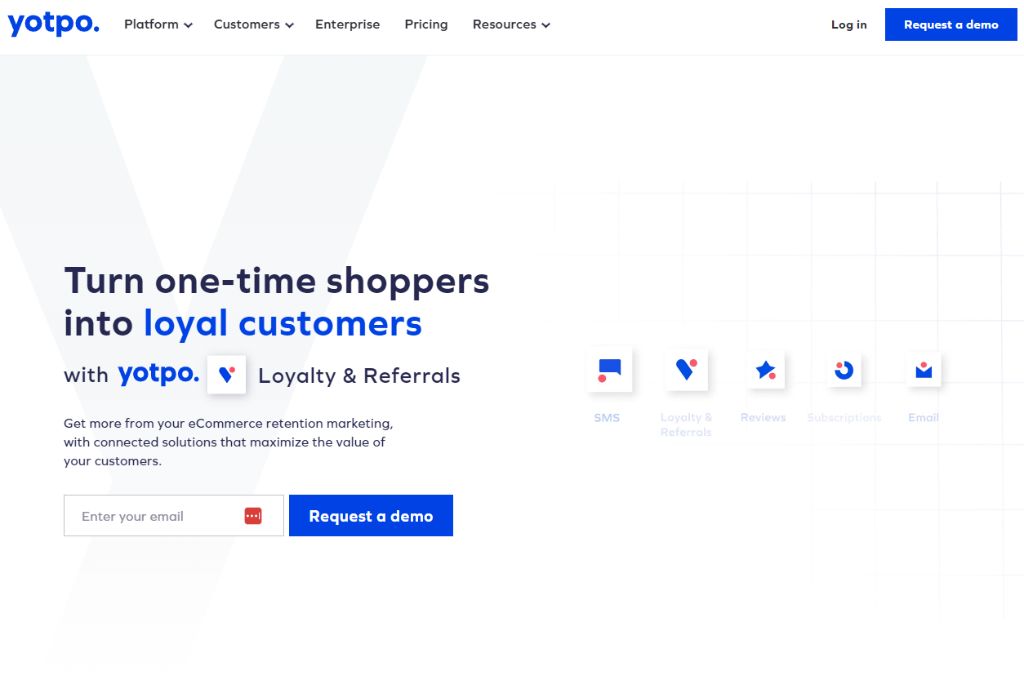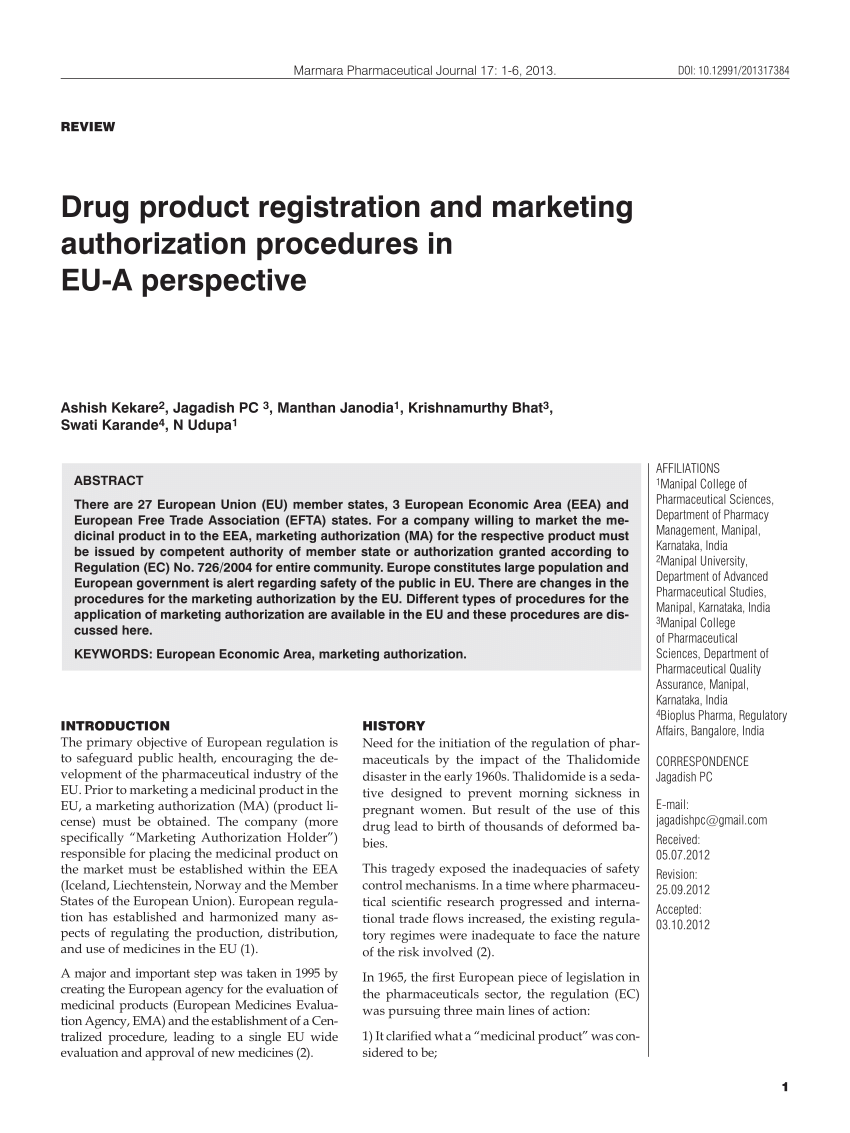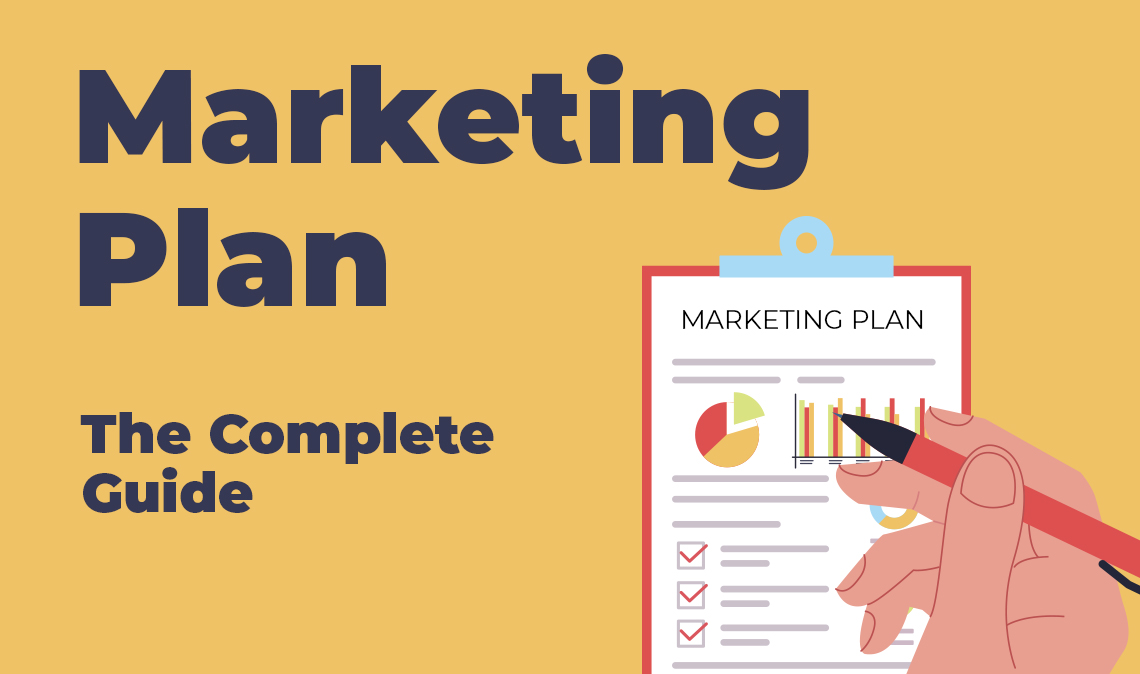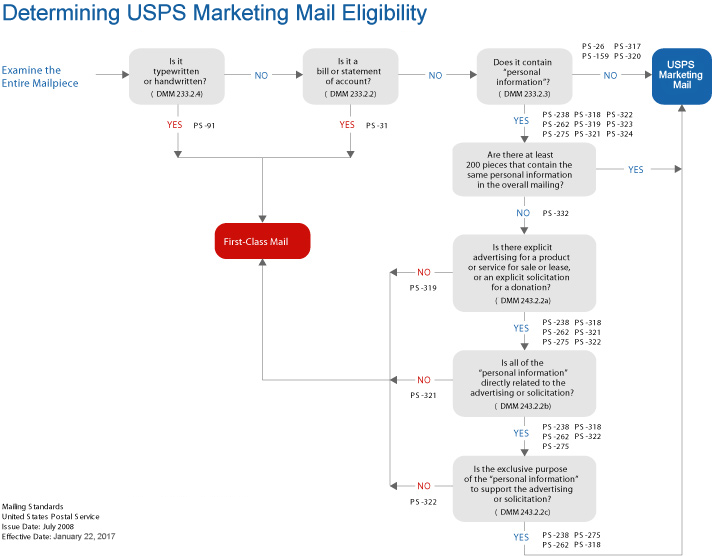Undeniably, the lifeblood of any viable business lies in its ability to generate sales. In the ultramodern, tech-driven era that we find ourselves in, the importance of employing dynamic digital marketing tools to secure potential leads cannot be overstated. Among them, content marketing stands out as a core strategy that businesses must adopt for the propagation of their products and services.
In this article, we will delve into how content marketing could become a game-changer for your business. We will explore various content marketing strategies that can be adapted to bolster sales. The idea is to empower businesses with the ability to craft compelling content, building relationships with consumers, and ultimately seeing a notable increase in conversions and sales.
The Significance of Strategic Content Marketing in Boosting Business Sales
In today’s digital era, leveraging strategic content marketing to amplify sales has become a crucial part of a successful business strategy. Savvy marketers understand the potent influence of engaging and insightful content on their consumers’ purchasing decisions. Let’s delve into the vital role of strategic content marketing in escalating business sales.
Connecting with the Audience
Firstly, quality content is a powerful tool to connect with the audience and foster a strong brand-consumer relationship. It allows businesses to understand their consumers’ needs and tailor their offerings accordingly. Furthermore, relatable content endears the brand to its audience, thereby influencing their buying preferences positively.
Converting Leads into Paying Customers
Through the use of compelling narratives, strategic content marketing catalyzes the conversion of leads into customers. It addresses potential apprehensions, offers solutions, and articulates the product’s benefits compellingly. Thus, it guides prospects smoothly through the customer journey, eventually leading to an increase in sales.
Optimizing SEO Ranking
Additionally, quality content is key to optimizing the search engine ranking, thereby increasing brand visibility. This invariably leads to higher website traffic, providing ample opportunities to convert visitors into customers. As a result, this contributes significantly to boosting sales figures.
Building Brand Loyalty
Consistent and valuable content delivery helps to build brand loyalty, which is a key factor in ensuring repeat business and increased sales. By continuously offering relevant content to your audience, businesses can maintain consumer interest and engagement, prompting them to return and make future purchases.
- Finally, it is also worth noting that strategic content marketing helps in gathering crucial consumer insights, aiding businesses in making informed marketing and sales decisions.
Comprehending Who Your Ideal Customers Are for Robust Content Tactics
Understanding your ideal customer is crucial to implementing potent content tactics. Effectively reaching out to your prospective client audience can significantly enhance your business output. Therefore, tailoring your content marketing strategy to cater to their specific needs and interests is key to nurturing a connection with them and ultimately boosting your sales.
Identifying the ideal customer persona is a cornerstone for any successful marketing campaign. This involves researching and gathering insights on details such as their demographic information, buying habits, interests, needs, and pain points. This allows you to cultivate a comprehensive understanding of your target consumer, thereby equipping you to craft tailor-made content that resonates with them.
- Demographic Information: Understanding the basic demographic details such as age, gender, location, and occupation of your target audience can significantly influence your content creation. For instance, a younger audience might prefer more vibrant and progressive content, whereas an older audience might be inclined towards conservative and more informative content.
- Interest and Habits: Delving into the interests, habits and behaviors of your prospective customers can provide valuable insight into how to engage them. It will help in creating content that appeals to their preferences and lifestyle.
- Needs and Pain Points: Identifying what challenges your audience faces and what they need gives you an opportunity to offer effective solutions. By doing so, your content not only becomes relevant but also helpful and valuable to the user.
After successfully identifying and understanding your target audience, the next critical step is segmentation based on the gathered data. Different groups will have different needs and preferences, and segmenting them accordingly will allow you to create personalized content for each group. This approach is beneficial for promoting a more effective engagement, thus, making your content strategy more efficient.
From identifying your ideal customer persona to effectively segmenting them, understanding your target audience is at the core of content marketing. It provides you with a better chance of engaging them and eventually turning them from prospects into loyal customers. Thus, knowing your potential client base can empower your business to enable a notable increase in sales using effective content strategies.
Building High-End Content That Appeals to Potential Customers
The content creation process plays a crucial role in enhancing sales progressively via effectual content marketing policies. It’s all about developing content that aligns with your buyer’s preferences and requires insight into the buyer’s persona and their consumptive patterns.
Content that is authentic, engaging, and buyer-oriented can be a game changer for businesses. The goal is not just to create content, but to develop content that resonates with your target audience and influences their buying decisions.
Crafting Customer-centric Content
In order to develop this caliber of content, it’s paramount to have an in-depth apprehension of your potential clients. The customer’s purchasing process, what inspires them, and the challenges they encounter are just a few aspects to consider.
- Understanding your customer: Essentially, it begins with identifying who your target customer is, understanding their preferences, desires, and needs. The more you understand them not just as consumers but as individuals, the easier and much more effective your content creation process will be.
- Engaging your customer: The next step involves creating content that draws them in. This could be done through storytelling, informative articles, exciting videos, appealing images, and more. The rule of thumb is to position your product or service as a solution to their needs or challenges in an engaging manner.
- Continuously updating content: Old content can lose its appeal over time. Consistently refreshing your content not only maintains the interest of your current customers but also attracts new ones. Regular updates also improve your search engine rankings, making your business more visible to potential customers.
Meticulously crafted, client-driven content can take your sales to the next level. Start understanding your buyers today and craft your content strategies around them.
Enhancing Your Content with SEO for Increased Online Visibility
While producing high-quality content is crucial for successful marketing, increasing its visibility on the web is equally important. By fine-tuning your content for search engine optimization (SEO), you can ensure that it reaches the right audience and boosts sales.
Why is SEO crucial for content marketing?
An effective SEO strategy can significantly increase the online visibility of your content. When your web page clearly presents the search engine with its purpose and relevance to users, it may rank better in the search results. With better rankings, comes higher visibility and thus, improving the chances of attracting potential customers.
Let’s delve into a few key tactics you can implement to leverage your content’s SEO:
- Optimizing your content around specific keywords can make it more likely to rank high in search results. However, avoid keyword stuffing as it can lead to penalties from search engines.
- Including internal and external links can provide more context to your content and boost its SEO value. Be cautious to link relevant pages only.
- Providing high-quality and unique content is indispensable. Duplicate content or low-quality pages can harm your SEO performance.
- Ensuring your website is mobile-friendly can help you rank higher in search results as many users now use mobile devices for web browsing.
- Page loading speed also affects the SEO. The quicker your page loads, the better the user experience, impacting your search engine ranking.
In conclusion, utilizing SEO strategies to optimize your content can be an effective way of reaching your target audience and boosting your sales. However, remember that like most strategies in digital marketing, SEO requires consistency and patience for the most effective results.
Employing Social Networks for Spreading Digital Content
Boosting sales through content marketing strategies is an effective approach for businesses. Among the various tools of these strategies, utilizing digital broadcasting platforms such as social media bears paramount importance.
Effectively utilizing digital broadcasting channels provides a significant amplification to your content’s reach, thereby improving its visibility and interaction rate. These digital platforms allow for greater engagement, encourage social sharing, and potentially boost conversion rates.
Major Social Media Tools for Content Dissemination
- Facebook: With over two billion active users, it is a great platform for reaching a wide audience globally. The platform supports a variety of content formats and allows for targeted advertising.
- Instagram: Highly renowned for its visual-based content, it is ideal for businesses that rely greatly on images and videos. It also offers Story and IGTV features for diversifying content presentation.
- LinkedIn: Suitable for B2B businesses, it is ideal for sharing professional and industry-specific content.
- Twitter: With its swift and free-flowing content feed, it is perfect for sharing timely and relevant content, including news, updates, and articles.
Choosing the right platform will depend on your business’s industry, niche, and targeted demographics. It is critical to understand each platform’s strengths and the type of audience they draw.
Overall, integrating social media within your content marketing strategy can lead to significant improvements in content reach, customer interaction, and eventually sales growth.
Integrating the Power of Influencer Marketing in Your Content Marketing Efforts
Incorporating social influencers in your content marketing tactics is a potent marketing strategy that can aid in optimizing your sales output. It offers an authentic and persuasive path towards brand interaction and promotion that can elevate your brand’s visibility and reputation in the digital realm. But knowing where to start and how to perfectly blend influencer marketing into your content scheme is what makes the difference.
Understanding the impact of Influencer Marketing
Influencer marketing is far from icing on your digital marketing cake. It’s the sponge, the filling, and the cherry. By working with influencers who have a similar target demographic, your brand gets instant recognition and credibility. They become the brand’s voice that reaches the audience in a convincing manner, something that traditional advertising channels struggle to achieve.
The collaboration of Content Marketing and Influencer Marketing
When the convincing power of influencer marketing is combined with a high-quality content marketing strategy, the outcome can be exponential. These influencers can bring creative, engaging, and valuable content to their followers, leveraging their relationship, trust, and influence.
- By incorporating user-generated content crafted by influencers, businesses can reach their target audience more effectively.
- Brands can also consider co-creating content with influencers pertinent to their promotional campaigns to ensure relevancy and quality.
- Influencer-hosted events, QAs, or takeovers on brand’s social media platforms can shift the paradigm of engagement, making the interaction more personal and engaging.
However, implementing this potent combination requires comprehensive research, meticulous planning, and precise execution to ensure the generated content aligns with the brand positioning, target audience, and long-term business objectives.
Ultimately, the successful amalgamation of Influencer marketing and Content marketing could unlock new avenues of customer engagement and forge a sustained path of growth for businesses.
Exploiting the Power of Visuals for Customer Engagement and Conversion
When aiming to bolster sales through effective content marketing methods, leveraging visuals is not something businesses can ignore. Bear in mind that the digital realm has undergone drastic changes, with visual content becoming a vital part of online marketing strategies. Video content, in particular, has proven to be an exceedingly powerful and engaging tool to reach and convert potential customers.
The Appeal of Video Content
Video content holds an alluring appeal for modern consumers. If a photo can speak a thousand words, a video can speak volumes. It offers a much richer and immersive experience compared to plain texts or even images. While words can certainly narrate a story, videos can provide a multi-dimensional experience that combines visuals, sounds, and emotions to create a lasting impact.
Unlocking Customer Conversion
But what makes video content a standout when it comes to driving sales? One significant advantage of video is its versatility. It can cater to various types of content, making it suitable for businesses of different niches.
- Product Demos: A well-crafted product demo video can serve as the ideal salesperson, showing off your product’s benefits while also highlighting how it solves a problem for the consumer.
- Testimonials: Video testimonies offer an authentic and credible way to show potential customers that real people have availed and benefited from your products or services.
- How-To Guides: Practical tutorial or instructional videos can provide real value to your audience, thereby establishing your brand’s authority in a particular field.
Mentioned above are some common but effective methods to use video content for customer conversion. Therefore, the vital role of video content to engage and eventually convert customers into paying customers in a sales-boosting content marketing strategy cannot be overstated.
How to Turn Emails into a Powerful Sales Machine?
Email marketing can be of great value when it comes to generating revenue, but only if approached with an effective content strategy. If you craft your messages creatively and effectively, your emails will not only be opened, but also have a conversion impact. Let’s dive into how to turn communication by email into profits.
Develop Content that Resonates With Your Audience
First and foremost, understanding who your audience is and what kind of data they resonate with, is the key to creating successful email content. All the emails you send to your subscribers need to add value to their lives. You can achieve this by focusing on the quality of the content, whether it be informational, educational, motivational, or simply offering irresistible deals.
- Informational emails could include industry news or tips related to your product or service.
- Educational emails could teach your customers how to get more benefits from your products or services.
- Motivational emails could share success stories or positive reviews to inspire your audience.
- Offer emails could provide exclusive deals, discounts or bundle offers designed specifically for your audience.
Personalize Your Emails
Moreover, personalizing your email content is a powerful practice that can skyrocket your sales results. It is about addressing your viewer by their name, knowing their preferences, and tailoring the content to meet their needs. Consider that every email you send is a direct intimate conversation with your prospective client or customer, and make them feel special.
Implement a Strong Call to Action
Lastly, having a strong call to action (CTA) is an essential aspect of converting people from emails. It means encouraging your reader to take the next step whether it means buying a product, filling out a form, or even just clicking a link to read more. Ensure that your CTA is clear, compelling and placed at a strategic point in the email.
In summary, craft engaging, valuable content that perfectly resonates with your audience, customize it to reflect their preferences, and drive your message home with a compelling CTA. This approach will assure that your investment in email marketing will pay off in sales.
Evaluating the Effectiveness of Content Marketing through Analytical Tools
Using analytical tools has become fundamental part in understanding how successful your content marketing tactics are in boosting sales. It’s no longer sufficient to just create and distribute engaging and high-quality content. Strong emphasis must be laid on evaluating the fruits of your efforts. The key purpose of analytics in content marketing domain is to gain insights about customer engagement and conversions stimulated through content.
Key Analytical Metrics in Gauging Content Marketing Success
Understanding what metrics to track and their relevance to your content marketing strategy is central in determining success. Metrics may vary depending on the unique goals of your content marketing strategy. However, some crucial indicators span across most strategies.
- User Behavior: Analyzing user behavior involves tracking metrics such as page views, bounce rate, time spent on the website, exit rate, click-through rate etc. These metrics give insights into how the visitors interact with your content.
- Engagement: These involve metrics related to social shares, comments, likes and other engagements on social media and blog posts. High engagement is a strong marker of valuable and resonating content.
- Conversion Metrics: These include conversion rate, new subscribers, leads generated or actual sales made as related to the content. A content can be considered successful if it can turns visitors into leads or customers.
These analytic metrics are useful in understanding your audience’s perception of your content. This provides opportunity to tweak your content marketing to better align with your audience needs and thus enhance sales.
The Role of Analytical Tools
With a plethora of analytical tools available, choosing a one that suffices your needs is central. A tool like Google Analytics can offer in-depth insights into user behavior and website traffic. For social media, Buffer or Hootsuite offer detailed analysis on user engagement. For understanding conversion path, tools like Crazy Egg or Hotjar can provide valuable data.
In conclusion, keep in mind that all metrics and tools are just means to an end in understanding your audience and delivering what they need. It’s critical to effectively use these data insights and align your strategy accordingly for delivering successful content marketing.
Keeping Up-to-Date: Consistently Refreshing Your Content Marketing Methods
In the rapidly evolving world of digital marketing, it’s crucial to stay up-to-date and regularly revise your content marketing approach. This is key to maintain robust sales figures and guarantee the effectiveness of your content marketing strategies.
Effective content marketing methods are not static. They require continual fine-tuning, testing and improvement. Staying current signifies more than simply jumping on the newest trends. It involves tracking the performance of your content, understanding your audience’s changing preferences, and adjusting your strategy accordingly.
Advantages of Regularly Revising Your Content Marketing Approach
- Boosted Engagement: Regularly enhanced content keeps viewers interested, which can boost interaction rates and build stronger relationships with your audience. Outdated content can result in a decrease in engagement and eventual loss of potential customers.
- Increased SEO Rankings: Search engines appreciate fresh content. Regularly modifying your content marketing plan to include new, high-quality content can enhance your search engine rankings, leading to more organic traffic.
- Better Conversion Rates: Staying current with your content marketing strategy will enable you to better cater to your customers’ needs. By understanding and responding to their changing preferences, you’ll be able to encourage more significant conversion rates.
By keeping your content marketing plans fresh and updated, you can optimize your chances of increasing sales and growing your online presence. Whether it involves exploring new types of content or tweaking your keyword strategy, it’s essential to continuously evolve and adjust your content marketing tactics to maintain your competitive edge and reach your business goals.
Illustrative Examples of Victorious Strategies for Content Promotion Leading to Elevated Sales
An Eye-Opening Tale of Hubspot’s Success with Inbound Marketing
Many businesses may be aware of Hubspot, a platform widely used for marketing, sales, and service. However, a lesser-known fact is their influential role in advancing the concept of inbound marketing. The company’s novel approach to content marketing did wonders to improve their business, demonstrating the power of effective strategic execution.
In this case, Hubspot used its blog not simply to sell their product, but to deliver valuable, educational content to their audience. This helped them garner credibility and ultimately increase their customer base. It’s an inspiring example of how content marketing can be used as an effective tool to not only boost sales but also strengthen brand authority.
The LinkedIn Learning Approach: Combining Quality with Quantity
Networking giant LinkedIn showcased an exemplary model of successful content marketing with its LinkedIn Learning platform. It offered high-quality, easily accessible educational content targeting professionals seeking to improve their skills. Their move from purely social networking to value-offering firmly placed them as a leading platform in professional development.
LinkedIn made use of their enormous user base to identify needs and target their content accordingly, ultimately leading to a substantial increase in platform usage. The success of LinkedIn Learning illustrates how astute understanding of customer needs, paired with comprehensive and high-quality content, can have a significant impact on sales and customer engagement.
Coca Cola’s Content 2020: An Initiative that Changed Their Marketing Strategy
The renowned beverage company Coca Cola stunned the world with its Content 2020 initiative. The plan wasn’t about selling more beverages, but about telling stories – stories that would engage consumers on an emotional level and, in turn, boost their product sales.
No company had tried such a large-scale shift in marketing strategy before, and yet, Coca Cola emerged victorious. Their initiative showed the effectiveness of storytelling in content marketing, reinforcing the idea that engagement, and not hard selling, is crucial for boosting sales.
These case histories prove how creative and effectively implemented content marketing strategies can lead to a significant increase in sales. The takeaway? Understand your audience, deliver valuable content, and focus on engagement – the sales will follow.
FAQ: How content marketing drives sales
How can the collaboration between the sales team and marketing team enhance the overall effectiveness of a business?
By aligning strategies and communication, the sales and marketing teams can create a cohesive approach that attracts and converts leads more efficiently.
In what ways does marketing automation contribute to supporting the sales process and improving the sales cycle?
Marketing automation streamlines repetitive tasks, nurtures leads, and provides valuable insights, enabling the sales team to focus on high-priority activities and shorten the sales cycle.
How can marketing content be tailored to specifically support the sales team and help them reach their quotas?
Crafting content that addresses the needs of potential customers at different stages of the sales funnel can provide the sales team with valuable tools to engage prospects and meet their quotas.
What role does sales enablement play in ensuring that the sales force is equipped with the necessary tools and information to effectively engage with customers?
Sales enablement involves providing the sales team with resources, training, and support to enhance their productivity, ensuring they can effectively communicate the value of products or services.
How can marketing departments create content that not only attracts new customers but also supports the sales team in closing deals?
Marketing departments can create case studies and success stories that highlight how products or services have solved specific problems, providing the sales team with valuable content to share with prospects.
In what ways does aligning sales and marketing strategies contribute to achieving higher quality leads and prospects?
When sales and marketing work in tandem, they can define and target specific audience segments more effectively, resulting in a higher likelihood of attracting leads that are genuinely interested in the offering.
How can marketing initiatives be structured to not only generate business opportunities but also facilitate the sales team in converting those opportunities into actual sales?
By tailoring marketing initiatives to provide leads with the information and resources they need at each stage of the sales funnel, marketing can ensure a smoother transition from lead to customer.
What role do marketing qualified leads (MQLs) play in supporting the sales team, and how can they be effectively nurtured through the sales funnel?
MQLs are leads identified by marketing as potentially valuable. Nurturing involves providing them with relevant content and information to guide them through the sales funnel until they become sales-ready.
How can regular updates to sales reps on marketing initiatives and content empower them to better represent the brand and its offerings?
Keeping sales reps informed about the latest marketing strategies and content ensures they are equipped with up-to-date information, allowing them to effectively communicate the value proposition to prospects.
According to research, how does a well-aligned sales and marketing relationship contribute to business growth and the achievement of sales goals?
Research indicates that businesses with aligned sales and marketing teams experience more efficient lead conversion, improved customer retention, and ultimately achieve higher sales goals, contributing to overall business growth.
How can aligning sales and marketing teams better support sales and improve overall sales performance?
When sales and marketing work cohesively, they create a unified strategy that targets and nurtures leads effectively, ultimately improving sales performance.
What role does effective content from marketing play in supporting sales and guiding prospects through the sales funnel?
Tailored content developed by marketing can address the needs of prospects at different stages of the sales journey, assisting sales by providing valuable information and fostering engagement.
In what ways can marketing channels be utilized to grow a business and generate sales leads effectively?
Leveraging diverse marketing channels enables businesses to reach a wider audience, thereby increasing the number of leads and potential sales opportunities.
How can marketing support inside sales teams in defining and meeting sales quotas?
Marketing support ensures that inside sales teams have access to targeted strategies and materials that assist in meeting their quotas effectively.
What strategies can be employed to ensure that the marketing team creates content that aligns with the needs of the sales team and the prospects they’re targeting?
Collaboration between sales and marketing leaders ensures that the marketing team creates content aligned with the sales strategy and tailored to address the needs of the target audience.
How does a well-defined sales plan ensure that marketing helps sales by providing the necessary tools and resources?
A comprehensive sales plan outlines the specific needs and targets of the sales team, allowing the marketing team to create content and tools that directly support these objectives, thus aiding sales.
How can marketing support sales and contribute to better sales and marketing alignment?
Marketing can support sales by aligning strategies, sharing data, and collaborating on initiatives that drive a unified approach to customer engagement.
What role does the marketing team play in helping your sales team, and how can it better support the entire sales process?
The marketing team can help the sales team by providing relevant content, using marketing tools, and facilitating leads through the sales funnel, contributing to a more effective sales process.
In what ways can aligning your sales and marketing efforts save your sales team time and improve the relationship with sales?
Aligning sales and marketing efforts can save time by streamlining communication, updating sales reps with pertinent information, and fostering a cohesive relationship that enhances overall productivity.
How does marketing contribute to growing your business, and what steps can be taken to define sales roles more effectively in the context of modern marketing?
Marketing contributes to business growth by creating content, defining sales roles, and using new marketing approaches. Aligning marketing and sales strategies ensures a more efficient use of resources to meet the needs of people who need your products or services.







